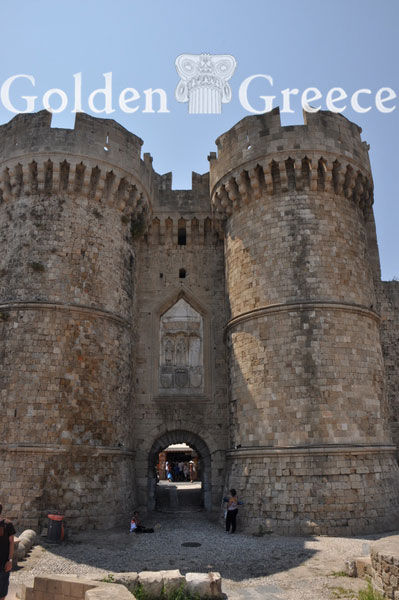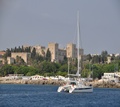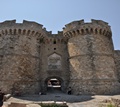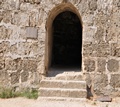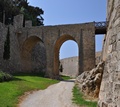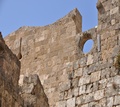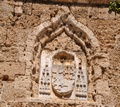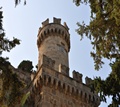
The written sources mention the presence of a fortress that served to protect the population in case of enemy attack, as early as the 7th century, which was confirmed by the excavation research. This proto-Byzantine fortification initially enclosed only one part of the settlement, which in the period of the Knighthood was called Kollakio, but at the end of the 11th or during the 12th century. it appears to have been amended to include the settlement outside the walls. After the arrival of the John Knights on the island, in 1309, the city's fortifications were expanded, the city quadrupled in size compared to the Byzantine one and developed into a semi-circular area of 800,000 sq.m. around the main port. The construction of the new walls was gradually adapted to the requirements of the time, as they had been formed after the general use of gunpowder and firearms. The repairs and modifying interventions in the Rhodian fortifications during the Chivalry are clear testimonies of the above development.
The new fortifications defined three lines of defense, the last being the fortress complex of the Grand Master's Palace. Between this and the perimeter wall was an intermediate defensive line, a wall that divided the city into two unequal parts. The northern and smaller part was called Kollakio and was reserved exclusively for the activities of the members of the chivalric order. Its main axis was Knights Street, which started from the Palace of the Grand Master and ended at the church of Panagia tou Kastro, while on both sides stood some of the most important knightly buildings, Agios Ioannis of Kollaki, the Accommodation of Languages, the chapel of the Holy Trinity, the Hospital and the residences of the officers of the order. The rest of the population lived in Burgo.
The Grand Master's Palace is perhaps the most important monument of the Knighthood. During the Italian restoration, in the 1930s, the building took on its current configuration, becoming the command post and also the residence of the Italian commander. In the rooms of the first floor, the visitor can admire the mosaic floors that were brought by the Italians, mainly from secular and ecclesiastical buildings of Kos, in order to decorate the Palace.
Editor: Niki Kalopaidis
